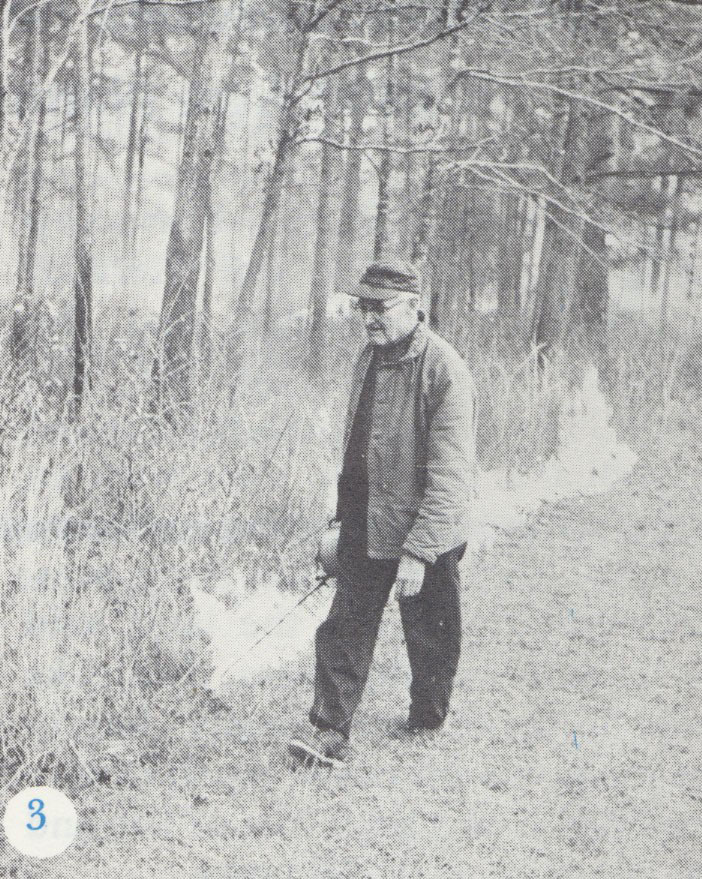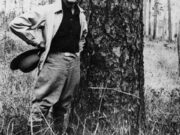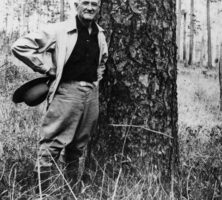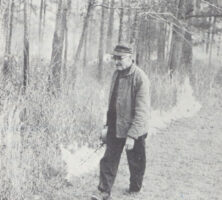Herbert L. Stoddard, one of the most important southern conservationists of the twentieth century, developed a method of forest management in the longleaf–wiregrass region of Georgia that is still widely practiced today. Also known as an authority on the bobwhite quail, Stoddard advocated the reintroduction of fire as a land management tool, at a time when powerful forest interests considered burns to be a plague on the land. Along with his friend and colleague Aldo Leopold, Stoddard also helped to establish the profession of wildlife management, and he was among the first to critique from an ecological perspective the nation’s move toward industrialized agriculture.
Herbert Lee Stoddard was born on February 24, 1889, in Rockford, Illinois, to Helen Eugenia Wallace and Herbert A. Stoddard. A self-educated naturalist, Stoddard worked as a taxidermist from 1910 to 1913 at the Milwaukee Public Museum in Wisconsin, and from 1913 to 1920 at the Field Museum of Natural History in Chicago, Illinois. In 1915 he married Ada Wechselberg, with whom he had one son, Herbert L. Stoddard Jr., known as “Sonny.”
In 1920 Stoddard returned to the Milwaukee Public Museum. He remained there until 1924, when the U.S. Bureau of Biological Survey hired him to study the habitat and life history of quail in the Red Hills, located between Thomasville, Georgia, and Tallahassee, Florida. The position also called for Stoddard to help implement land management measures that would ensure the bird’s stability in the area, which is famous as the birthplace of the southern quail preserve. Stoddard settled with his family in Grady County on a 1,000-acre property named Sherwood. In 1931 he published The Bobwhite Quail: Its Habits, Preservation, and Increase, which was not only the first comprehensive study of quail, but also a landmark study in the field of wildlife management. While earlier management efforts involved little more than setting state hunting regulations, eradicating predators, or artificially propagating game birds, Stoddard argued that wildlife populations could be sustained and increased through the active management of natural processes.
Stoddard’s most controversial management practice was the use of fire to maintain the Red Hills’ longleaf pine forests. Southern farmers, and Native Americans before them, had long used fire as a tool to make their forests and fields more livable, but after the destructive logging practices of the late nineteenth and early twentieth centuries, many foresters assumed that fire would make the reforestation of pine impossible. State and federal foresters implemented educational campaigns to curtail the practice of southern woods burning, thereby disrupting the natural development of the longleaf landscape. Stoddard was among the first to suggest that they were wrong. He recognized, along with a handful of other practitioners, that the Coastal Plain environment, and the longleaf-wiregrass ecosystem in particular, had evolved in concert with frequent fire, and he argued that fire should be harnessed as a tool of ecological management.

Courtesy of Tall Timbers Research Station & Land Conservancy
After publishing The Bobwhite Quail, Stoddard continued working as a private researcher and wildlife consultant until World War II (1941-45), when he was forced to take a more active role in forest management. He developed a multiaged system of forestry based on a sustained-yield, selective-cut harvest that not only maintained the health of the longleaf-wiregrass environment but also enhanced it in many cases. Stoddard’s system of forest management, implemented and refined by his protege Leon Neel, is known today as the Stoddard-Neel method and continues to be practiced in the Red Hills.
In 1958 Stoddard, along with his colleagues Henry Beadel, Ed Komarek, Roy Komarek, and Leon Neel, founded Tall Timbers Research Station near Tallahassee, Florida. Based on a quail preserve formerly run by Beadel, Tall Timbers was the first research station in the nation devoted to the study of fire ecology. With the inception of its Fire Ecology Conference in 1962, Tall Timbers became for many years the only real outlet for the dissemination of research on the ecological effects of fire. Researchers at the station initially focused on the Southeast, but the studies at Tall Timbers eventually expanded to address fire regimes in the western United States, as well as African, Australian, and Mediterranean fire ecosystems. It is perhaps only a slight overstatement to say that these fire conferences, which continue to be held every few years, revolutionized the ways that both professional foresters and laypeople think about the ecological role of fire.
Although he began his work in the Southeast as a quail expert, Stoddard’s approach to overall habitat management resulted in a system that ensured the ecological health of the region. Many forest ecologists now see the techniques he developed in the Red Hills, and the Stoddard-Neel method in particular, as a pioneering template for modern conservation in the South’s longleaf-wiregrass forests. Finally, his work is responsible for the survival of ecologically diverse longleaf-wiregrass environments in the southern coastal plain.
In 1969, one year before his death, Stoddard published Memoirs of a Naturalist, a chronicle of his career. He died on November 15, 1970, at Sherwood, where he was buried.







